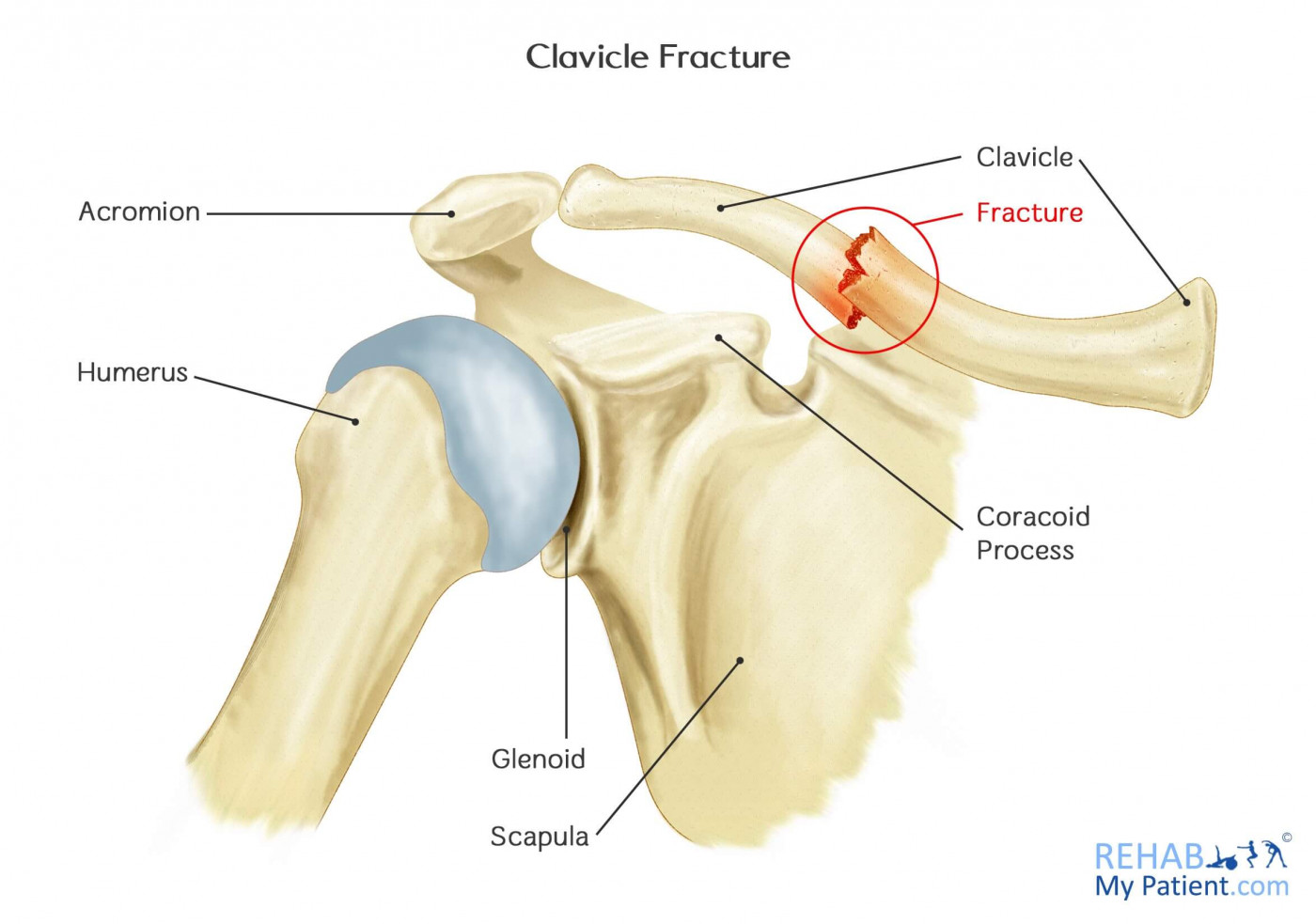
The collarbone (clavicle) is one of the main bones found in the shoulder joint. Its primary role is to hold the shoulder up, as well as the shoulder blade (scapula) and the acromioclavicular (AC) joint. The collarbone is responsible for providing strength and stability to the shoulder. It also serves as a protector for the blood vessels and nerves running from the shoulder to the neck.
Broken collarbones are often caused by direct contact to the bone or the shoulder. Most of the time, this occurs when playing sports like wrestling, football, rugby or ice hockey. It is one of the most commonly broken bones in the body. Young men between the ages of 13 and 30 tend to break the bone the most frequently. During play, younger children have an increased likelihood of breaking the collarbone.
Clavicle Fracture Anatomy
The collarbone (clavicle) is a bone that is slightly curved connecting the breastbone (sternum) to the acromion processes of the shoulder blade. The shoulder joint provides motion between two of the main bones: the scapula and the humerus. Shoulder joints are often referred to as ball and socket joints. Depressing the scapula provides the socket for the humerus' head. Muscles and ligaments work to stabilize the joint during weight bearing activities and range of motion.
The clavicle is connected to the scapula at the acromion, which is a bony projection extending from the scapula. The joint is normally surrounded and secured by the acromioclavicular ligaments.

When suffering a clavicle fracture, the key thing to establish is whether the clavicle is displaced or not. I.e. are the two bones broken and overlapping? Or is the break clean, and the ends of the bone could re-join. If the bones are overlapping, surgery is inevitable. If the bones are not displaced, surgery may not be required.
How to Treat a Clavicle Fracture:
- Use a Sling
Many broken collarbones will end up healing on their own. For those who don’t need surgery, you can use a sling to prevent your shoulder and arm from moving while the bone is in the healing process. Adults will need to wear the sling for a few days up to one week, while children might need to wear one for as long as three to four weeks.
- Exercises
Begin simple mobility exercises 7-10 days following fracture, under guidance of your therapist. Move on to strengthening exercises if they don’t cause pain, when your mobility has improved. If you begin the regime too soon, you could end up with a broken collarbone that doesn’t heal properly, so make sure to get approval before engaging in an exercise program. For those who are active, avoid playing sports or engaging in other activities until your shoulder feels strong and you can freely move it.
- Anti-Inflammatory Medication
To help alleviate pain and inflammation, an anti-inflammatory might help relieve some of the pain. The hospital will direct you on their use.
- Surgery
For severe breaks, surgery might be required. When the ends of the broken bone don’t line up properly with each other, surgery is inevitable. The bone is pinned or plated to attach the ends together.
Tips:
- Those who are diabetics or smokers will take longer to heal from the fracture.
- Returning to regular activities too soon can cause the fragments to move (known as non-union).
- Regardless of whether you need surgery or not, it can take months for the fracture to completely heal. It is not uncommon to be in pain for three months.
- Babies can get fractured collarbones from their passage through the birth canal.
- Sometimes stiffness in the shoulder joint can occur following clavicle fracture, and can occasionally lead to frozen shoulder. This is due to immobility of the shoulder while the clavicle is healing.
Sign Up
Sign up for your free trial now!
Get started with Rehab My Patient today and revolutionize your exercise prescription process for effective rehabilitation.
Start Your 14-Day Free Trial